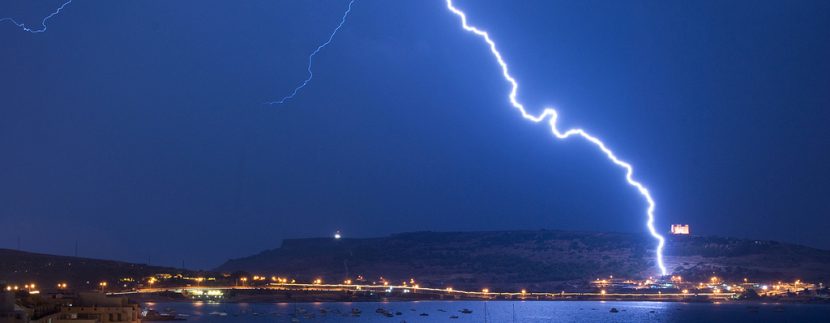Do we need a lightning conductor in our home?

People die. That is an axiom. But do you know the odds of dying of say a heart disease? Well, pretty high really, is 1 in 5. Of cancer?1 in 7.Of an accidental injury 1 in 36.Air travel accident?1 in 20.000. A lightning strike…..? 1 in 83.930. Very hide indeed but the situation changes when dealing with houses. I have found that 1 out of 200 houses will be struck by a lightning every year. So is no joke to find out if your house needs to be protected by a lightning conductor or not.
There has been and advancement with regards to lightning conductor design. Each year the communications, energy and security technologies advance in the sense of improving the utilization and benefits that coexist in building installations andhow we have to adapt to them.
The Spanish Building Regulations forced us architects to carry out a study of lightning protection needs on every building or home designed in order to get to know the actual need for protection of the building in question. In most cases the need for a lightning protection is not required, according to our calculations, so there is no need to place lightning rods on the roof as a means of protection.
A lightning rod placed on a mast at the top of the
building.
The most common and well-known systems of lightning protections are the simple “Franklin lightning rods “ which is a lightning rod placed on a mast at the top of the building. By placing these gadgets, the entire building is transformed into a possible point of lightning impact, is the principle of operation of ionizing systems (Franklin- lightning rods), the rod gets excited and draw lightning which is lead to earth by bare ground wires.
The problem with this system is not that lightning rod system may or may not works, the problem is that heads of the rod is not able to recognize or discriminate any type of lightning or its intensity, and the intensity can vary a lot, It can range from 5 to 350,000 amperes.
An old technology not without problems.
Part of this system of protection, the ionizing type is called Franklin system, an old technology that can be still found in roofs, and coexisting with installation of radio and television aerials in the form of antennas, in energy production systems in the form of solar or photovoltaic panels.
When lightning hits on these lightning rods, it is impossible to predict what will happen, because depends on the amount of energy discharged, the amps will run in microseconds to the ground, following the metallic conductive elements from the copper head and wire conductor to the ground, but if the system wasn’t large enough as an energy transporter, the building is put at risk by the high-voltage going through it and not being able to avoid destruction of sensitive electronics equipment, by induction, or overvoltage in the electric data networks, including a returns of current via the earthing and neutral poles. Electricity overflow may jump from outside into the electrical installation of the building.
The Spanish electro-technical regulations for low voltage indirectly prohibit these Franklin- lightning rods technologies, by openly limiting the dangerous currents in bare wires, and forbidding any system that allowed an over-range electromagnetic effect. It even prohibits the possibility that by the earthling poles may appear any voltages that may put into risk the lives of people.
New methods of lightning protections are now used to avoid the formation of lightning forming on the building which is supposed to be protected. In the technical literature they are usually called “non-conventional systems”.
An umbrella that protects the building against the fall of lightnings.
The basic characteristics of these systems incorporate a system of transfer of charge (CTS), by transferring the electrostatic charge before the formation of the lightning cancelling the phenomenon of ionisation or corona. In other words create an umbrella that protects the building against the fall of lightning.
The lightning rod head consists of two aluminium electrodes separated by a dielectric insulator all of this supported by a small stainless steel mast. Its shape is spherical and the system is connected in series with the own earthing to transfer the electrostatic charge to earth avoiding excitement and direct impact of the lightning bolt.
Its principle of operation relies essentially on channelling to earth the potential difference between the cloud and the head of the lightning rod, the installation first pushes upwards, through the bare ground wire; the voltage generated by the thunderstorm to the highest point of the installation, during the process of the storm is generated fields of high tension that are concentrated in the bottom electrode (cathode-), from a magnitude of the electric field, the upper electrode (anode) attracting opposite charges to offset the inner potential difference of the head, during the transfer process the flow of current between the anode and the cathode occurs in the interior of the lightning rod, this natural process cancels the effect “Crown” on the outside of the lightning rod.

 Spanish
Spanish German
German Dutch
Dutch